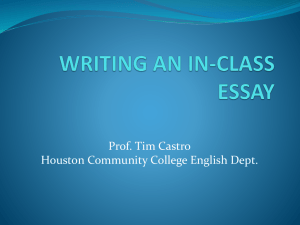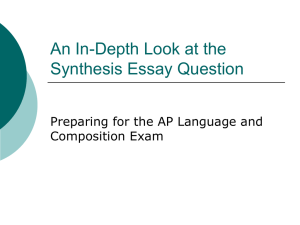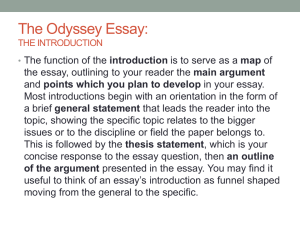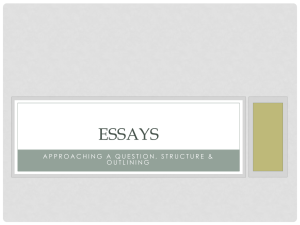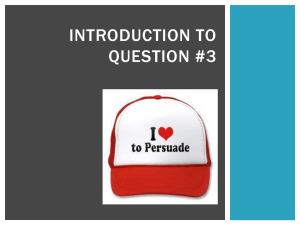Arguemntative essay
advertisement
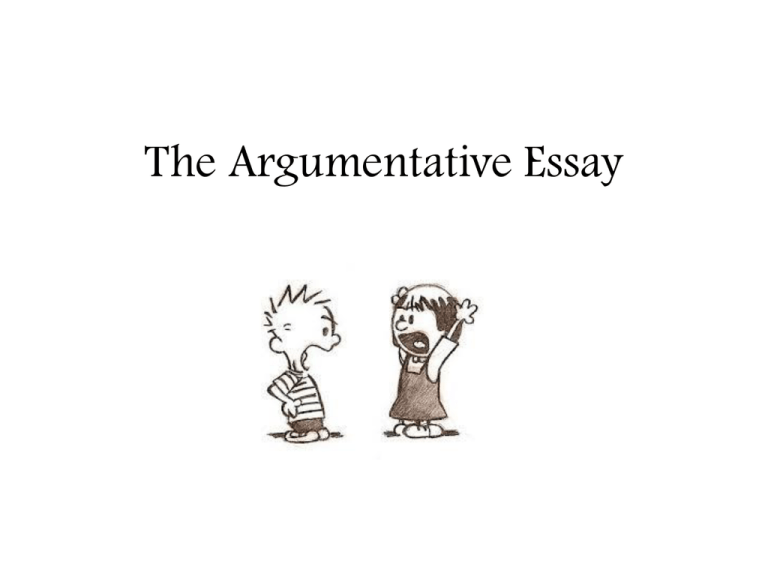
The Argumentative Essay This just won’t cut it . . . A strong ARGUMENT essay will . . . • address an issue you feel passionately about • ask the reader to accept the writer’s explanation or evaluation of an issue or problem • change the reader’s point of view through the use of evidence and facts • identify & address the counterpoints (the other side of the issue) and disprove them Elements of the Argumentative Essay Claim (this is your thesis) Evidence: relevant and verifiable facts & stats (NOT emotion!) We call this LOGOS! Explanation: how the evidence supports the claim Counter-arguments: acknowledgement of differing claims So, let’s begin . . . Planning Stage • For an argument essay to be effective, it must contain certain elements. For this reason, you must take a few minutes to plan and prepare before you jump into writing an argument essay. Finding Your Topic • To find good topic for an argument essay you should consider several issues that will have two conflicting points of view. • As you look over a list of topics you should find one that really sparks your interest. While a strong interest in a topic is important, it's not enough to be interested. You have back it up with EVIDENCE! • As you explore the topics, make a mental list of points you could use as evidence for or against an issue. Possible Topics • • • • • • • • • Are our zoos cruel to wild animals? Are women are better parents than men? Children should never be educated at home by their parents. . Does modern technology make life more convenient, or was life better when technology was simpler? Education is the single most important factor in the development of a country. The destruction of the world’s forests is inevitable as our need for land and food grows. Human beings do not need to eat meat in order to maintain good health because they can get all their food needs from meatless products and meatless substances. A vegetarian diet is as healthy as a diet containing meat. Violent video games creates violent individuals. Do we need art in our lives? • • • • • • • • • • • • • • Is cheating getting worse? Should students be able to grade teachers? How important is phys ed? The school day is too short/long. How should schools address bullying? Is prom really worth it? Are web filters at school too restrictive? Is facebook beneficial? How young is too young for an Iphone? Do shows like 16 and Pregnant promote or discourage teenage pregnancy? Can graffiti be considered art? Do parents have different hopes & standards for sons and daughters? Do photoshopped images effect our self-esteem? Should college athletes get paid? 200 Prompts for Argumentative Writing - NYTimes.com Consider Both Sides of Your Topic and Take a Position • Once you have selected a topic you feel strongly about, you should make a list of points for both sides of the argument and pick a side. • One of your first objectives in your essay will be to present both sides of your issue with an assessment of each. Of course, you will conclude that one side (your side) is the best conclusion. • In the planning stage you will need to consider strong arguments for the "other" side. Then you'll shoot them down! Gather Evidence • No Emotion! • In an argument essay you will have to provide evidence without providing too much drama. You'll explore two sides of a topic (briefly) and provide proof as to why one side or position is the best one. Just The Facts, Please Writing Stage • Once you've given yourself a solid foundation to work with, you can begin to craft your essay. • An argument essay contains three parts: the introduction, the body, and the conclusion. • Transition words and phrases between ideas • The length of these parts (number of paragraphs) will vary, depending on the length of your essay assignment. The Intro • HOOK—Interesting quote, fact or statistic, rhetorical question, anecdote/story • TRANSITION STATEMENT—Provide some background info and connect your HOOK to your THESIS • THESIS STATEMENT—Your Argument/Claim The Body Paragraphs Present both sides of the controversy • State your argument • Present your points (each will be a different paragraph) • Use a mix of evidence types: statistics, surveys, anecdotal stories, interviews. This part of your paper could be any length, from two paragraphs to two hundred pages. • Present the "other" side--the counterclaim! You will then provide evidence to show why your position is the correct one. Typically the last paragraph before the conclusion • Conclusion: Re-state your position as the most sensible one in your summary paragraphs. Tips for Your Essay: • Avoid emotional language • Know the difference between a logical conclusion and an emotional point of view • Don't make up evidence • Cite your sources (APA style) • Make an outline • Be prepared to defend your side by knowing the strongest arguments for the other side. You might be challenged by the teacher or by another student.






